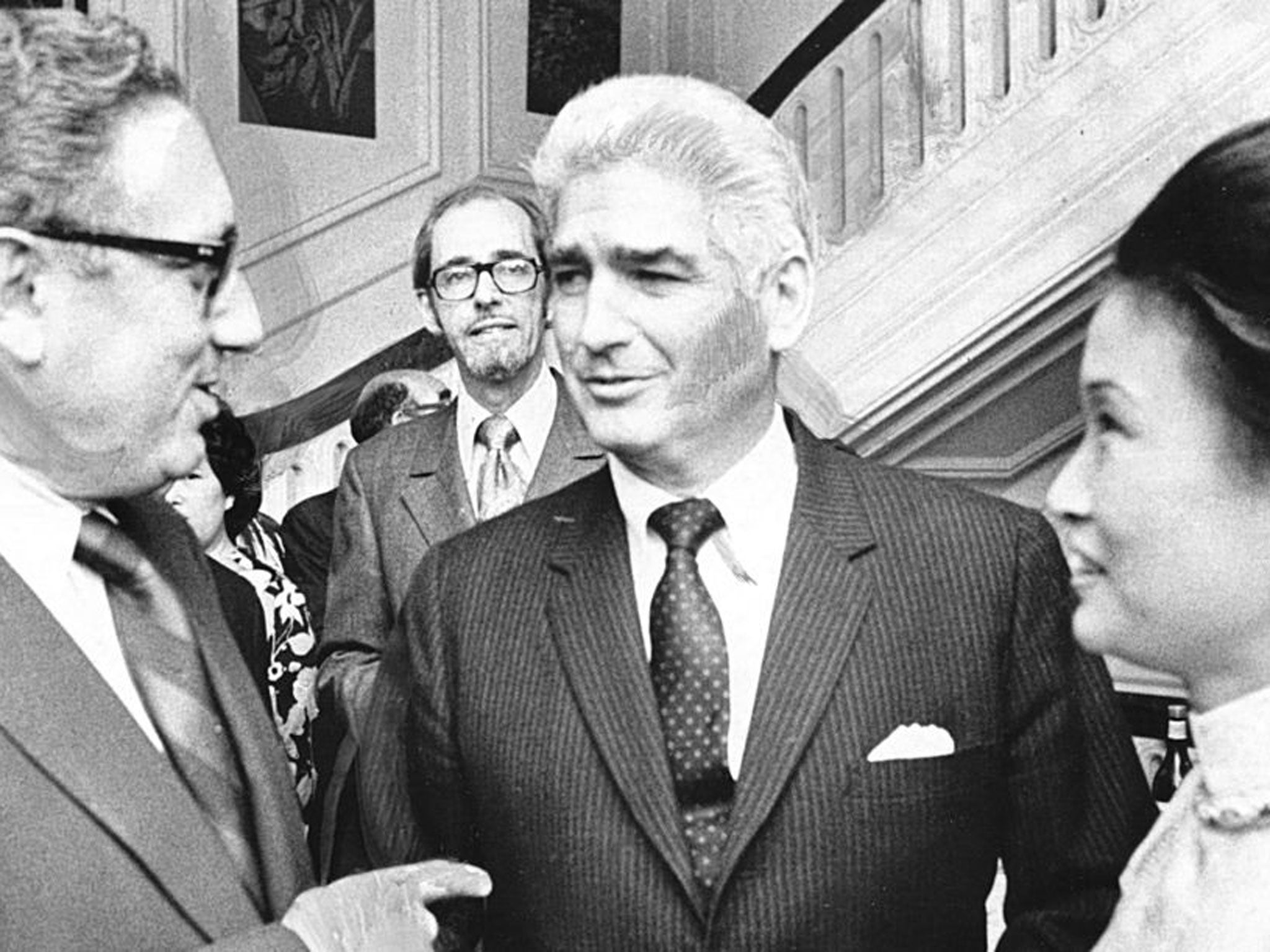William Sullivan: Statesman who helped take the US out of Vietnam and went on to serve as his country's last ambassador to Iran

Known as cool and unflappable under fire, William Sullivan was widely credited with saving dozens of American lives through his astute handling of an attack on the US embassy in Tehran by armed militants on 14 February 1979, nearly nine months before the better-known seizure that resulted in the hostage crisis. He was a veteran diplomat who oversaw the "secret war" in Laos, helped negotiate the end of US involvement in Vietnam and was the last American ambassador to Iran.
Sullivan was also renowned for his acerbic wit, and he famously clashed with Zbigniew Brzezinski, then national security adviser to President Jimmy Carter, over Iran policy. Asked by a Brzezinski aide on the phone whether he could arrange a coup against the Iranian revolution, Sullivan delivered what he later described as an "unprintable" reply. Told that his comment was unhelpful, he retorted: "Do you want me to translate it into Polish?"
As ambassador to the Philippines earlier in the 1970s, Sullivan negotiated an extension of leases for military bases there, despite a sometimes testy relationship with Ferdinand Marcos and his wife, Imelda. When she complained that she did not know what else she could do to help the country's poor, Sullivan told her, "You could try feeding them cake."
Born in 1922 to a dental surgeon and a schoolteacher, he joined the Navy and served in the Atlantic, Mediterranean and Pacific during the Second World War. His ship, the destroyer Hambleton, participated in D-Day and the siege of Okinawa.
After the war he joined the State Department. During his first assignment, as a consular officer in Bangkok in the late 1940s, he became the embassy's Indochina expert and made contact with Vietnamese communist guerrillas in northern Thailand. He was ordered to cease those contacts, but they stood him in good stead when he later helped initiate talks with the North Vietnamese.
In 1964 President Johnson named him ambassador to Laos, which was officially neutral but was fighting its own communist insurgency with clandestine help from the US. He controlled a secret bombing campaign against North Vietnamese troops and supplies moving through Laotian territory along the Ho Chi Minh Trail. Such was his tight control that "there wasn't a bag of rice dropped in Laos that he didn't know about," then-Assistant Secretary of State William Bundy said.
Since Laos was one of the few countries that maintained diplomatic relations with Washington and Hanoi, Sullivan was instrumental in opening discussions with the North Vietnamese that led to the Paris peace talks and, eventually, to the US withdrawal. During those talks in 1972 and 1973, Sullivan served as chief deputy to Henry Kissinger, President Richard Nixon's national security adviser.
Named ambassador to Iran by Jimmy Carter in 1977, Sullivan, a dapper, silver-haired patrician, arrived as turmoil was brewing against the Shah. A long-standing US ally, he faced gradually intensifying opposition from middle-class Iranians demanding greater political freedoms, and from Muslim fundamentalists aggrieved by increasing Western influence.
He initially sought to forge a close relationship with the Shah, but State Department critics said he was slow to realise that the Shah was in trouble. In a cable in October 1978, he called the Shah "the unique element which can, on the one hand, restrain the military and, on the other hand, lead a controlled transition." And he strongly opposed "any overture" to Ayatollah Khomeini, the exiled Shiite Muslim revolutionary leader.
Less than two weeks later, he reversed course, urging Washington in a cable to "think the unthinkable," expect the revolution to succeed, and prepare for a transfer of power.Brzezinski rejected that advice and Carter lost confidence in Sullivan, later complaining that a cable from him bordered on "insolence" for denouncing US failure to make direct contact with Khomeini, in exile near Paris.
After the shah fled in January 1979 and Khomeini made a triumphant return, revolutionary forces toppled the monarchy on 11 February. Three days later, armed leftist guerrillas attacked the US embassy, apparently hoping to trigger a response that would outrage Iranians and incite crowds to join the assault. Sullivan ordered Marines to use tear gas while embassy personnel destroyed classified files, code gear and electronic equipment. "If you need to protect yourselves, you may fire. If you can arrange to surrender, do so," he told Marines by radio.
The attackers eventually broke into his office and herded everyone out at gunpoint. Forces from the new pro-Khomeini government took control. At one point, a bearded, bayonet-wielding young man from the Khomeini forces conferred with Sullivan, their arms around each other's shoulders.
Sullivan left Iran soon afterward and retired from the Foreign Service. He headed the American Assembly, a public affairs forum, from 1979 to 1986.
William Healy Sullivan, diplomat: born Cranston, Rhode Island 12 October 1922; married Marie Johnson (died 2010; two daughters, two sons); died Washington 11 October 2013.
Subscribe to Independent Premium to bookmark this article
Want to bookmark your favourite articles and stories to read or reference later? Start your Independent Premium subscription today.

Join our commenting forum
Join thought-provoking conversations, follow other Independent readers and see their replies